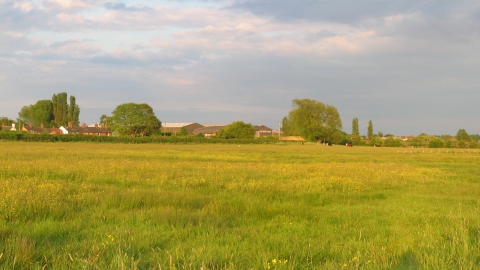
Pasturefields Saltmarsh
Know before you go
Dogs
When to visit
Opening times
You are welcome to enter the reserve outside the bird breeding season of March - August. Please be aware there are unfenced wet ditches and boggy areas so please keep to higher ground.Best time to visit
September to FebruaryAbout the reserve
Highlights
If you're a keen botanist then you'll find some unique saltmarsh plants here.
Staffordshire site Staffordshire–on-Sea!
You might be a long way from the sea, but this unique site provides an unusual taste of the coastline. Small it may be, but Pasturefields is one of only two remaining natural inland saltmarsh in the British Isles. Due to its unique ecological status, the reserve was proposed as a candidate Special Area of Conservation (a European habitat designation) in 1997.
What’s it doing here?
The site is a remnant of the former saltmarshes of the Trent Valley, once exploited for brine extraction. This saltmarsh still has two old brine wells, fed by naturally saline (salt-rich) water seeping up from deep underground. Despite its small size, it contains an unusual variety of halophytic plants (salt tolerant) which are usually found in saline coastal habitats. These include sea plantain, lesser sea spurrey, saltmarsh rush, sea arrowgrass and sea milkwort.
Do not disturb!
The site's damp conditions and location in the flood plain of the River Trent make it a valuable site for wading birds such as snipe, redshank and lapwing. Other birds regularly encountered include skylark, meadow pipit, grey heron, kestrel and buzzard. Because these birds are so vulnerable to disturbance visitors are asked not to wander beyond the gate during the bird breeding season.
Dirty Feet
All the plants in the marsh are salt tolerant (halophytic) and are usually found on coastal marshes and estuaries. These include sea plantain, lesser sea spurrey, saltmarsh rush, sea arrowgrass and sea milkwort. Nobody knows exactly how they got here, but it is possible that they came as seeds on the feet of birds migrating via the coast.
A Living Landscape
This nature reserve is part of the Staffordshire Rivers Living Landscape
'Living Landscapes' is The Wildlife Trusts innovative approach to nature conservation, and involves focusing our efforts on improving the wider landscape to make it better for wildlife. Find out more here


